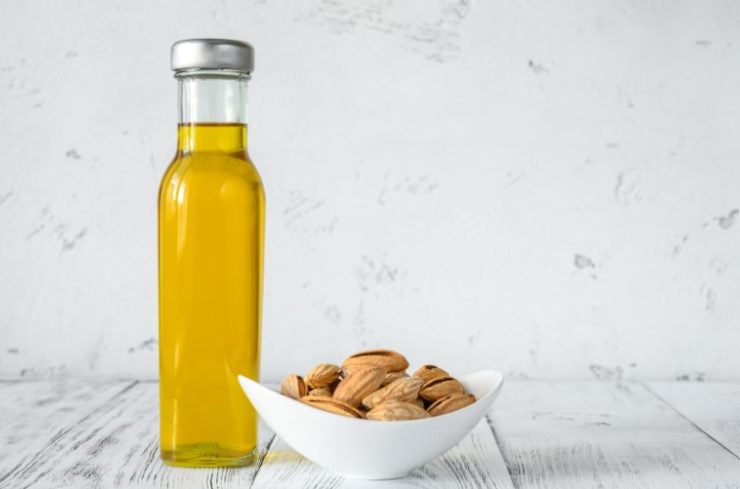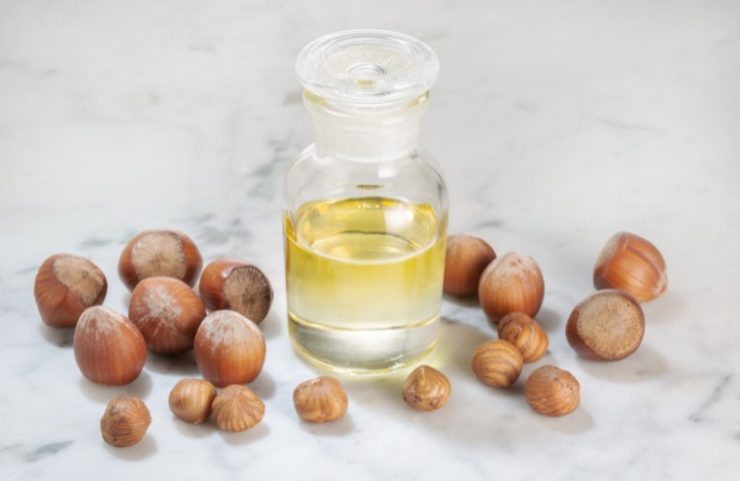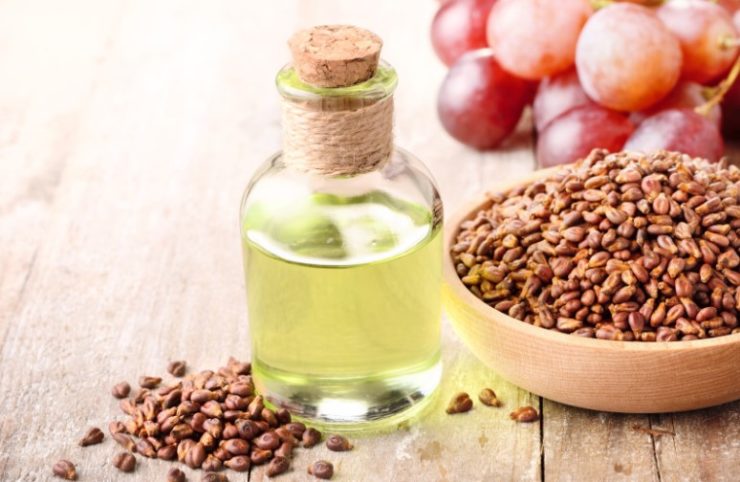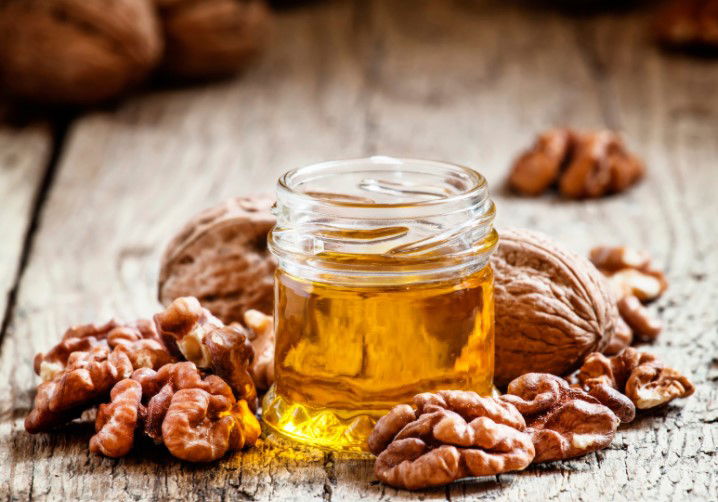Walnut oil is made by pressing dried walnuts. Since it is almost always cold-pressed (meaning that no heat is used), you get a lot of walnut flavor as well as most of the vitamins and minerals available from the nuts.
The cold-pressing process, plus the high cost of walnuts themselves, make this a fairly expensive cooking oil. It also makes this an oil best used raw or in baking applications. If used directly in the pan for things like stir-frying it can quickly break down and turn bitter.
Instead, walnut oil is best used as a unique and delicious finishing oil over meat, fish, or even pizza. It’s also a great option for salads and other dressings.
Getting to know these 7 walnut oil substitutes will help get you through any recipe you come across.
In This Article
1. Extra Virgin Olive Oil

Olive oil is one of the most well-known and widely used fats around. And while it’s made from the fruit of the olive tree and not a nut at all, there are a couple of reasons it’s still the best walnut oil substitute.
First of all, it’s available everywhere. There’s even a good chance you already have a bottle in your kitchen and that makes for a convenient alternative.
Second, the flavor goes well with just about anything. So, while it doesn’t have the same taste as walnut oil, chances are good that it will still taste great in whatever recipe you’re using, sweet or savory.
2. Almond Oil

Almond oil is pressed from almonds and adds a slight nuttiness to whatever it’s used in. Almond oil isn’t overtly sweet, but it isn’t as earthy as walnut oil and often does best in baking or sweet applications.
You can use almond oil to cook with as well but you’ll quickly lose a lot of its flavor and it can turn bitter if heated too high. Similar to walnut oil, almond oil can be on the expensive side and may not be available at all grocery stores.
3. Hazelnut Oil

Hazelnut oil is another nut-oil substitute that adds nuttiness but with a very distinct flavor. Similar to walnut oil, hazelnut oil is almost always used raw as a finishing oil or in dressings, or for baking applications.
This option works in both sweet and savory applications and should do well in most recipes that call for walnut oil. But, since it has quite a bold flavor, it can end up being very pronounced in some dishes so you may want to use it sparingly.
This is another option just like almond oil, that can be expensive and not always easy to find.
4. Peanut Oil

Peanut oil is an incredibly versatile oil that has a much more subdued flavor than the last few options. It’s technically a neutral-flavored oil, but it still offers delicious nutty undertones.
Since it doesn’t have a very strong flavor of its own, it can be a great stand-in for walnut oil. And while walnut oil is most often used raw, peanut oil has a very high smoke and is one of the more versatile oils to keep on hand for a wide range of cooking uses.
5. Grapeseed Or Other Neutral Flavored Oil

If you’re looking for a walnut oil substitute but don’t want to change the flavor profile of a recipe at all, grapeseed oil is your best bet.
Grapeseed oil has almost no flavor of its own and has one of the cleanest tastes out of any of the other “flavorless” oils. If you don’t have grapeseed you can certainly use something like safflower, canola, rice bran, or any other neutral vegetable oil.
This route can be a good way to get the right texture and mouthfeel. But, since it won’t add any flavor or nuttiness on its own, you might need to add flavor elsewhere or add actual walnuts to the dish if you have them on hand.

Go Nuts: Adding walnuts isn’t just a good idea when using a neutral oil. This can be a great strategy to keep that walnuttiness with any oil substitute.
6. Sesame Oil

Sesame oil is made from pressed sesame seeds and the most common type you’ll come across is actually toasted sesame oil. This option has a fairly pronounced flavor and aroma and will definitely be noticeable if it’s used as a substitute.
Toasted sesame oil is a key ingredient in many Chinese and Southeast Asian dishes, and can quickly send a recipe in that direction. So, while it can be a stand-in for certain recipes, you may want to use it sparingly.
7. Pumpkin Seed Oil

Pumpkin seed oil has an intense dark green color and a strong flavor of its own. Pumpkin seed oil should be reserved exclusively for raw applications. It has a flavor that verges on bitter and that can become overpowering if overheated.
It can be a delicious substitute in salads or drizzled over grilled meat where fat works to balance the somewhat bitter taste of the oil.
Tips For Working With Walnut Oil Substitutes
There are some good walnut oil substitutes but none that will really replicate the same walnut flavor. You can use almost any oil to get a similar texture and mouthfeel but the different flavors can have a big impact on a recipe.
If you don’t want to change the flavor profile of the recipe, using a neutral-flavored oil such as a canola can be a good solution and probably the safest bet. In that case, you may want to try adding actual nuts to the mix or adding more flavor elsewhere in the dish.
For more ingredient substitutes and culinary principles take advantage of our wealth of knowledge in the Kitchen Ambition Cooking School.
FAQ
What Can I Use Instead Of Walnut Oil?
Almond, hazelnut, and olive oil are all good walnut oil substitutes. You can also use a neutral-flavored oil like grapeseed that will not have an effect on the flavor of the dish.
Can I Use Sesame Oil Instead Of Walnut Oil?
Yes, you can use sesame oil instead of walnut oil but it will add a slightly different flavor to the recipe.
Is Walnut Oil Similar To Olive Oil?
The two oils are made from very different ingredients and have different flavors. But, olive oil is a great walnut oil substitute that fits well in most recipes.







